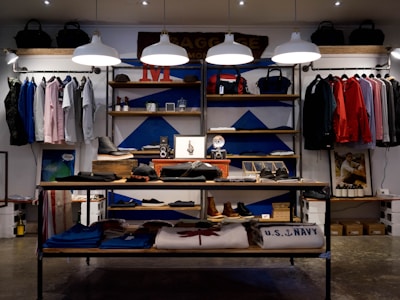
Sustainable Fashion Marketplace
A Sustainable Fashion Marketplace is an online or physical platform that connects environmentally conscious consumers with ethical and eco-friendly fashion brands. It serves as a bridge between designers committed to sustainable practices and shoppers who want to make mindful choices. In today’s world, where fast fashion dominates, these marketplaces are crucial for promoting responsible consumption and reducing the harmful impact of the fashion industry on the planet.
The Need for Sustainable Fashion
The traditional fashion industry is one of the largest polluters globally. It contributes to water pollution, greenhouse gas emissions, and massive textile waste. Fast fashion promotes overproduction, cheap labor, and disposable clothing that ends up in landfills. A sustainable fashion marketplace offers an alternative model — one that prioritizes environmental protection, fair labor, and long-term value over cheap prices and mass consumption.
What Makes Fashion Sustainable?
Sustainable fashion includes clothing, accessories, and materials that are produced, marketed, and consumed in ways that are environmentally friendly and socially responsible. Key principles include:
Eco-friendly materials: Organic cotton, recycled fabrics, hemp, bamboo, and plant-based dyes.
Ethical production: Fair wages, safe working conditions, no child labor.
Slow fashion: Durable, timeless designs made to last, not trend-based.
Circular economy: Recycling, upcycling, repairing, and resale to minimize waste.
Features of a Sustainable Fashion Marketplace
These marketplaces typically host a variety of brands that meet strict sustainability criteria. Some features include:
Brand transparency: Sellers must disclose sourcing, production, and ethical standards.
Product filters: Shoppers can search by material (e.g., organic cotton), certification (e.g., Fair Trade), or cause (e.g., vegan, zero-waste).
Impact tracking: Some platforms show the environmental or social impact of each purchase.
Educational content: Blogs, guides, or interviews that raise awareness about ethical fashion.
Popular sustainable marketplaces include ThredUp, Etsy (eco-focused shops), BuyMeOnce, DoneGood, and Wearwell.
Benefits for Consumers and Brands
For consumers, these platforms offer a curated, trustworthy place to shop sustainable options without having to research every brand individually. They also foster a sense of community and purpose, empowering customers to vote with their wallet for a better world.
For brands, especially small or independent labels, sustainable fashion marketplaces provide visibility, credibility, and access to a targeted audience that values their mission. It reduces marketing costs and helps scale their impact.
Challenges in the Industry
Despite growing awareness, the sustainable fashion marketplace faces challenges:
Higher prices: Ethical products often cost more due to fair wages and quality materials.
Greenwashing: Some brands falsely claim to be sustainable to attract conscious shoppers.
Limited scalability: It’s difficult for small sustainable brands to compete with fast fashion giants.
These platforms must be vigilant in vetting brands and educating customers to maintain trust.
Final Thoughts
A Sustainable Fashion Marketplace is more than a place to shop — it’s a movement toward a more ethical and eco-conscious world. It empowers both consumers and brands to make better choices. As awareness grows, these marketplaces will play a vital role in transforming the fashion industry into a force for good, blending style with sustainability.